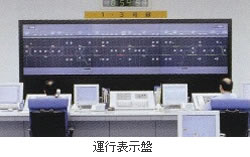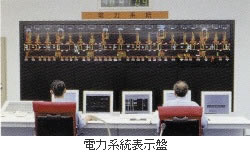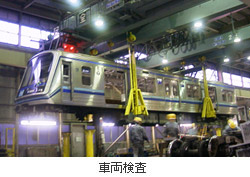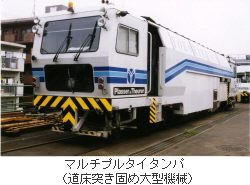Here's the text.
Safety of Operation
Last Updated January 14, 2022
Municipal Subways have implemented the following measures to ensure safe operation of trains.
1 Safe Operation Management

Municipal Subways use CTC (train concentration control device), PTC (operation management system), ATC (automatic train control device), power management system, equipment command system, etc. to ensure safe operation. All information from each system is sent to the general control center, enabling real-time response by building a centralized transportation management system centered on the general control center such as stations, trains, and maintenance facilities.
CTC is a device that collects information on the operation of all trains at the general command center and centrally controls signals and points at each station.
The PTC is a system that automatically controls the operation and guidance display of trains based on train operation information from CTC and pre-recognized train schedules.
ATC is a device that generates the indicated speed (signal) based on various conditions such as the condition of the track and the distance to the preceding train, and automatically applies the brakes when the speed of the train is above the speed limit to safely control the speed of the train.
Reference Materials for ATC (PDF: 15KB)

The power management system monitors the transmission status of all substations from the general command center, controls failure handling so that it can respond quickly in the event of an abnormality such as a power outage, and automatically processes power consumption management.
The equipment command system is a system that centrally monitors the operation and failure status of electrical equipment at each station, mechanical equipment such as ventilation and air conditioning pump equipment, signal security equipment, and communication equipment such as telephones at the general command center.
2 Safety Management of Drivers
In order to become a driver of a municipal subway, after experiencing a station clerk and conductor, conduct an aptitude test as a driver, conduct a subject course for about 3 months and a skill course for about 5 months, and pass the test The person who has passed is the driver.
Regarding the driver's driving work, the driver makes a roll call before starting the work, and after the supervisor checks the health status, etc., he enters the driving work. In addition, municipal subways conduct alcohol checks before roll calls, and have established a system to prevent drunk driving.
In order to confirm the work of operation work, the supervisor regularly conducts checks and guidance on the status of basic operations such as braking operation by adding to the driver's room. In addition, through education and training conducted at least 10 times a year, we strive to raise operational knowledge and raise awareness of safety regarding driving handling and handling in case of abnormality.
In addition, if the driver becomes unable to attend due to sudden illness, etc., the train radio informs the general command center that it cannot be used, and the general command center arranges a substitute and instructs to stop driving depending on the situation. It is supposed to do. In addition, an emergency brake automatically enters when the driver releases his hand from the steering wheel, such as when the driver loses his or her mind, and the train stops the train.
3 Safety management of vehicles and railway tracks

Vehicle maintenance is carried out regularly (inspection before and after use of the vehicle, every 10 days, every 90 days, every 4 years, every 8 years). As a measure to prevent derailment of vehicles, we properly manage the left and right wheel weight difference of vehicles within 10%.

Regarding the maintenance of the track, we will patrol the staff on foot during business hours and follow the train, inspect the condition and materials of the track after the end of the business (after the end of the car), and as necessary, solidify the roadbed We perform maintenance work such as sharpening of rails. As a measure to prevent derailment accidents, derailment prevention guardrails are laid at curves with a radius of 200m or less and where necessary.

- On the day of driving, the driver will receive a roll call before the flight.
- Report the physical and mental condition to the supervisor.
- Read out the instructions, communication items, notes, etc.
- The supervisor confirms the crew's mental and physical condition and readings, and transmits the notes as necessary.
- Read out the contents of the day's work (such as a transit route) and check with the supervisor.
- The clock has been corrected and the roll call has ended.
Municipal Subways always check alcohol before receiving a roll call or wake-up roll call, make sure that you are not drunk, and then make a ride.
Subway crew roll calls include bedtime roll calls, wake-up roll calls, and end roll calls in addition to pre-operate roll calls.
You may need a separate PDF reader to open a PDF file.
If you do not have it, you can download it free of charge from Adobe.
![]() To download Adobe Acrobat Reader DC
To download Adobe Acrobat Reader DC
Inquiries to this page
Operation Division, Transportation Bureau High-speed Railway Headquarters
Telephone: 045-671-3156
Telephone: 045-671-3156
Fax: 045-550-4181
Email address: kt-unten@city.yokohama.jp
Page ID: 252-968-213

